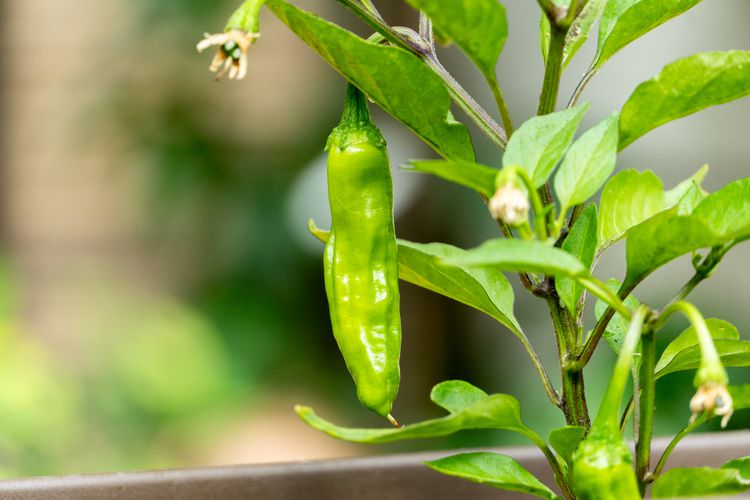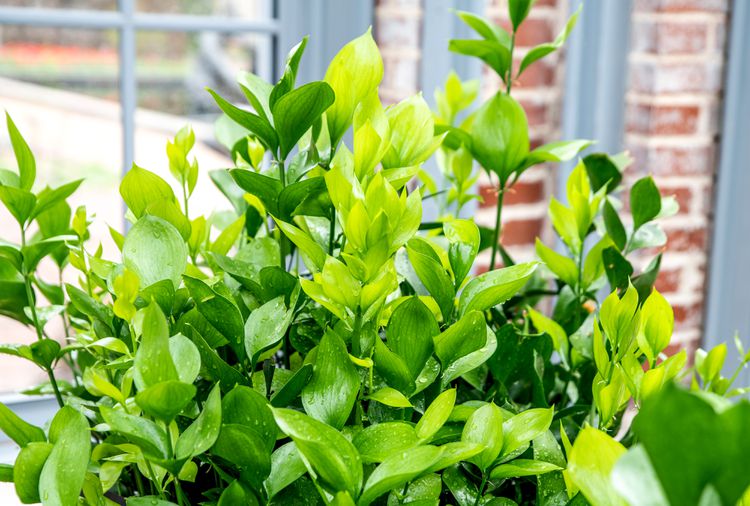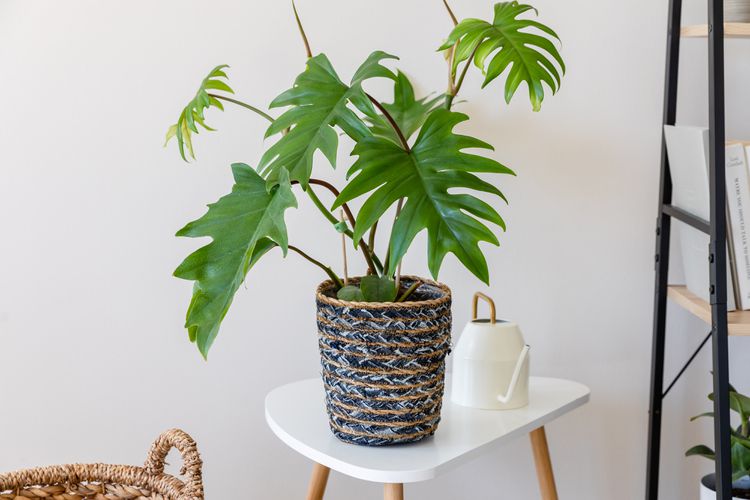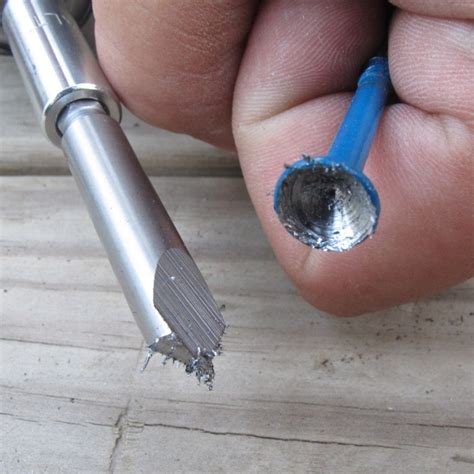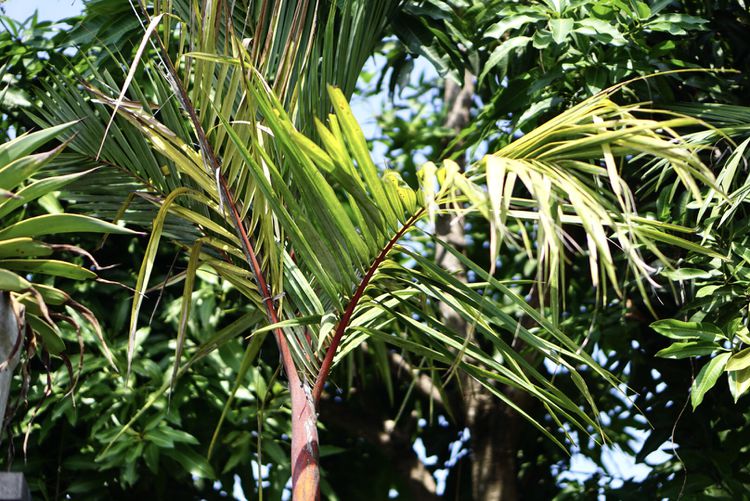
Cyrtostachys renda, commonly known as the lipstick palm, is renowned for its strikingly vibrant crownshaft, the section of the trunk from which the palm leaves sprout, which is the origin of its name. The trunk’s base features a vivid green color adorned with white rings, while the crownshaft boasts a brilliant red hue.
The leaves of this palm are a rich green and can reach lengths of up to 5 feet, featuring a pinnate structure. In its natural habitat, this palm can grow between 25 and 35 feet tall, but when cultivated, it tends to be much shorter. During the summer months, it produces a stalk adorned with small greenish-white flowers, which eventually develop into tiny black fruits. Known as the lipstick plant, it is indigenous to the Malay peninsula, Borneo, and Sumatra, thriving in a warm, tropical environment. The palm exhibits a clumping growth habit, resulting in trunks of varying heights, which creates a visually appealing, natural privacy screen. Due to its slow to moderate growth rate, it is suitable for pot cultivation and can be brought indoors to survive the winter in cooler regions.
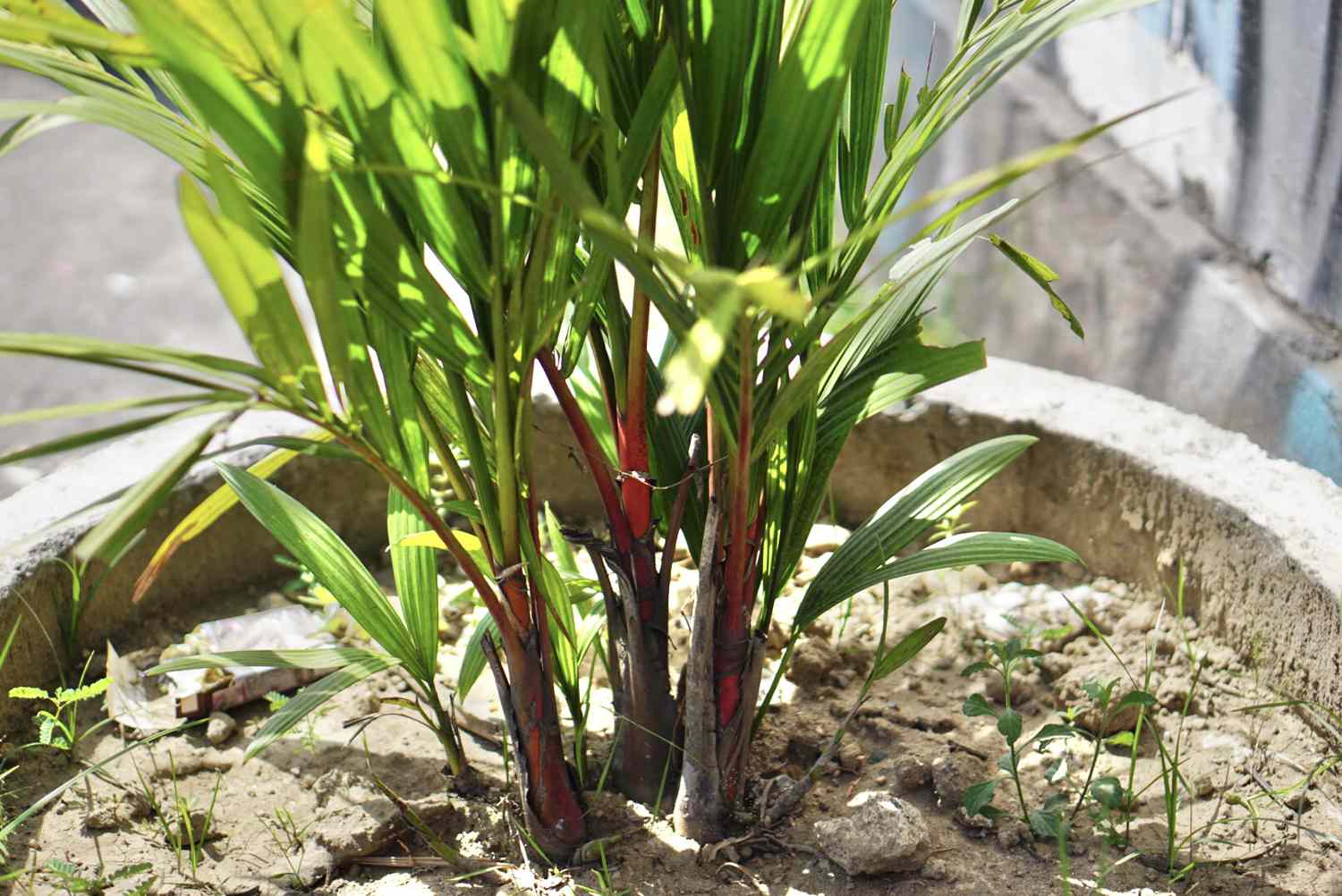
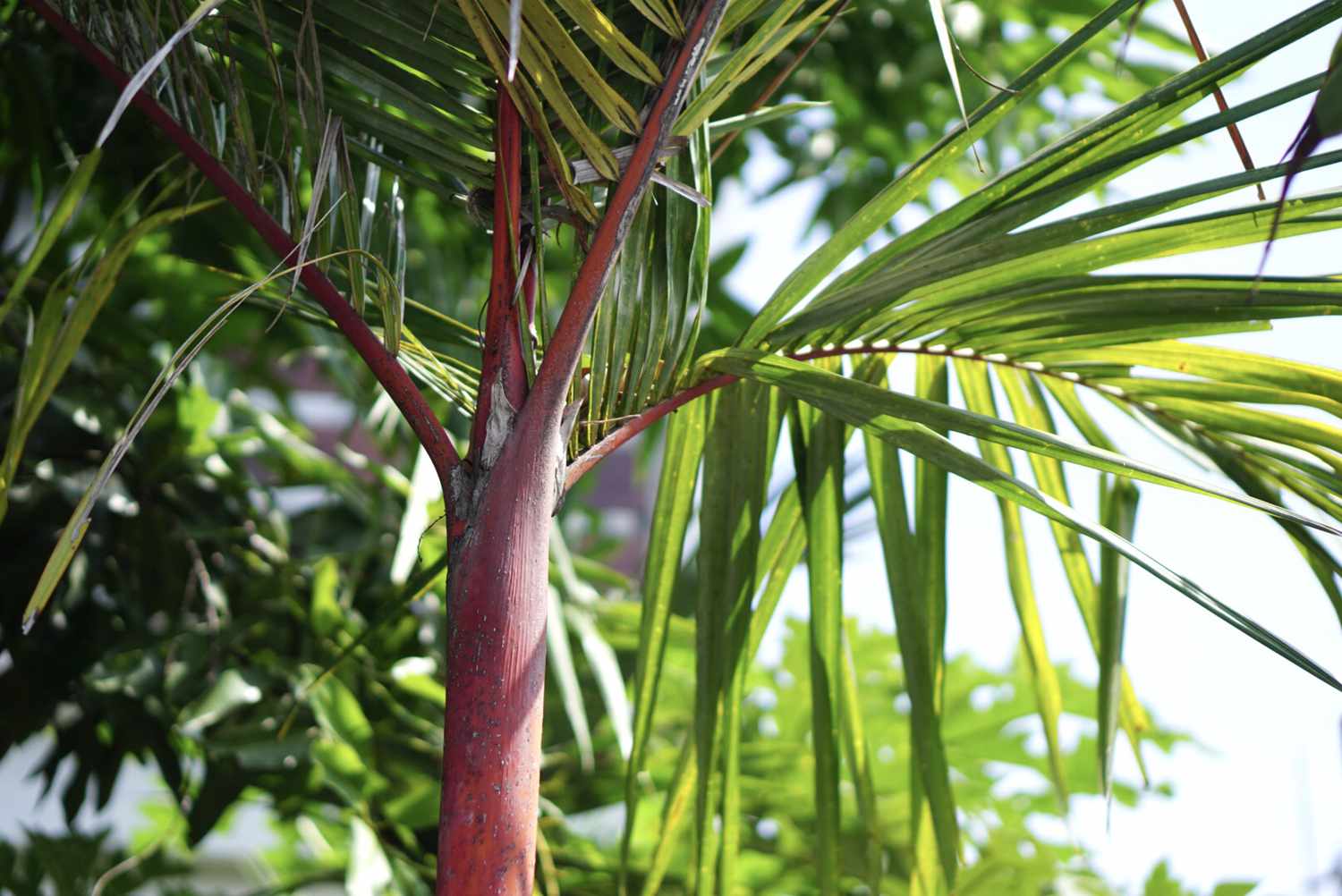
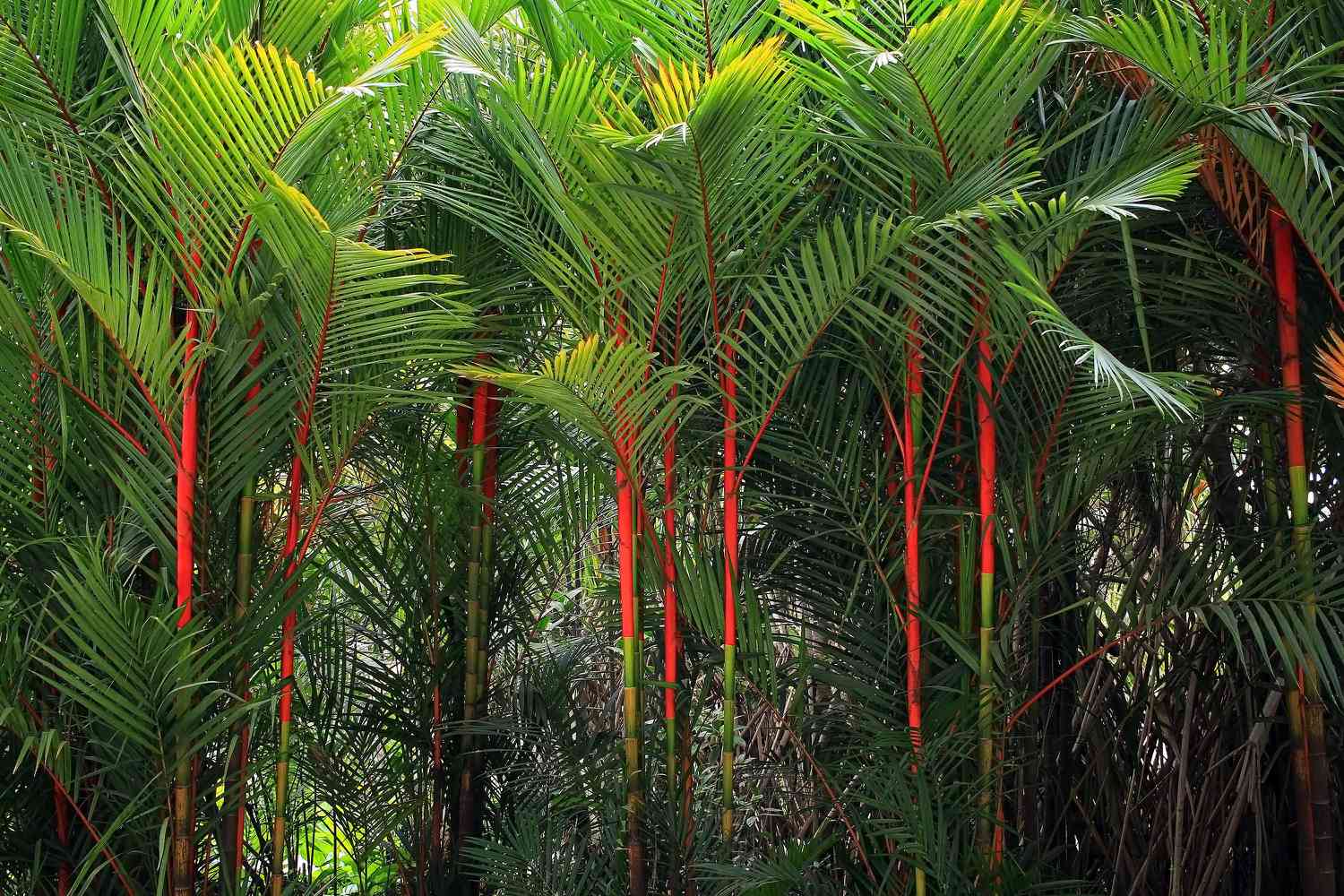
Light
Young and delicate palms thrive best in dappled sunlight. However, as they reach maturity, they can be cultivated in direct sunlight.
Soil
The lipstick palm thrives in damp, marshy environments, often found along riverbanks or in tidal zones. Remarkably, it can endure conditions with standing water, but it is sensitive to salt. Ideally, it prefers well-draining, moist loamy soil with a pH level ranging from 6.0 to 7.0.
Water
This tree, which thrives in humid conditions, needs regular watering to stay healthy. Ensure the soil remains damp, watering it before it dries out. The watering frequency may differ depending on the environment, but you may find it necessary to water a lipstick palm every day to keep it adequately hydrated.
Climate and Moisture Levels
The lipstick palm thrives in warm conditions and is sensitive to cold and windy environments. The optimal temperature range for this tree is approximately 75 to 85 degrees Fahrenheit throughout the year. It flourishes in locations with consistent temperatures.
It thrives in high humidity and struggles in dry conditions. To keep it healthy as a houseplant, you may need to adopt measures to increase humidity.
Fertilizer
Applying fertilizer to your palm tree is essential to prevent nutrients from being leached out due to regular watering. Opt for a slow-release fertilizer specifically designed for palms, and adhere to the guidelines on the label regarding the quantity and application frequency.
Pruning
The lipstick palm needs minimal pruning. Unlike many other ornamental plants, trimming does not promote additional growth. As a result, it’s best to only remove any damaged or unhealthy fronds to keep the plant looking neat and vibrant.
Cultivating Lipstick Palm
Similar to other palm species, the lipstick palm generates suckers or young shoots, which are ideal for propagation. Here’s the process.
- Utilize a sharp saw or a garden spade to detach the sucker from the parent plant, ensuring to take some roots along if feasible.
- Place the cutting in potting soil that retains moisture but drains well.
- Position the container in an area that receives some sunlight and ensure it is adequately watered.
Growing Lipstick Palm from Seed: A Step-by-Step Guide
While it is feasible to cultivate the lipstick palm from seeds, the journey is known to be lengthy and difficult. Germination can take anywhere from two to three months, and it may take several years for the young plants to reach just a few inches in height. Therefore, the favored approach for propagation is to use suckers, as it is a more efficient and straightforward method compared to seed cultivation.
Transplanting and Replanting Lipstick Palms
The lipstick palm can thrive in both indoor and outdoor container settings. Opt for a spacious container that is both wide and deep to support its root system and promote healthy growth. It is advisable to use sturdy materials like clay or terra-cotta to reduce the risk of the palm tipping over.
Remember that the lipstick palm, when grown in a pot, requires regular watering, especially on a daily basis during warm weather.
The lipstick palm grows at a slow to moderate pace, which means it doesn’t require frequent repotting. Nevertheless, after a few years, it may become root-bound. When this occurs, it’s necessary to transfer it to a bigger pot with new potting soil.
To repot the palm, begin by carefully removing it from its existing container. Tilting the pot to the side can make this easier. After you’ve extracted the plant and its roots, transfer the palm to a larger pot that can support its future growth, and fill it with a potting mix that drains well. Firmly press the new soil down and give it a good watering.
Caring for Lipstick Palms During Winter Months
In USDA Zone 11a, where winter temperatures can fall between 40 and 45 degrees Fahrenheit, the lipstick palm significantly benefits from a thick layer of mulch, which helps safeguard its root system from the cold.
In many regions of the continental U.S., it’s advisable to cultivate this palm indoors throughout the year or to keep it indoors during the winter months. If your lipstick palm is placed outdoors during the summer, make sure to bring it indoors once the nighttime temperatures fall below 45 degrees Fahrenheit.
Frequent Insects and Plant Ailments
The lipstick palm typically remains unaffected by major pests or diseases. However, when grown indoors, it may encounter problems with spider mites or scale insects.
What makes the lipstick palm so costly?
Lipstick palms tend to be pricier than other, more widely available palm varieties due to their rarity and exotic nature. Cultivating these trees in a nursery requires a significant amount of time, precise environmental conditions, and regular watering, all of which contribute to their elevated cost.
Is it possible for lipstick plants to thrive in water?
Lipstick palms are classified as marginally aquatic plants. They require soil that remains consistently damp and flourish in moist environments close to water sources, although they do not flourish in stagnant water.
Do lipstick palms possess aggressive root systems?
The plants produce suckers, which can be advantageous for propagation, yet their roots remain contained and are not invasive.

